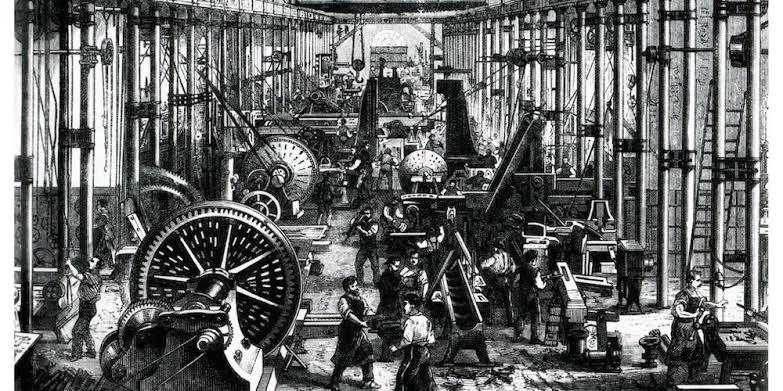The Industrial Revolution, which began in the late 18th century, stands as one of the most transformative periods in human history. It marked a profound shift in the way people lived, worked, and interacted with their environment. Originating in Britain, it spread across Europe, North America, and eventually the world, changing not only the landscape of industries but also the very fabric of society. This revolution, driven by a series of technological innovations and changes in economic and social structures, fundamentally reshaped the global economy and left a lasting impact on modern life.
Before the Industrial Revolution, most people lived in rural areas and worked in agriculture or small crafts. The economy was largely agrarian, and production was limited by traditional methods of hand labor and animal power. However, with the advent of new machinery and the rise of factory-based production, this agrarian economy began to give way to an industrial one. The key innovations that fueled this shift were numerous, ranging from the development of the steam engine to the creation of new methods of mass production, which dramatically increased efficiency and output.
One of the most important inventions during the Industrial Revolution was the steam engine, modified by James Watt in the late 1700s. This invention revolutionized transportation and manufacturing by providing a reliable source of power that was not dependent on natural forces like wind or water. Steam engines powered factories, trains, and ships, making it possible to transport goods more efficiently and at greater distances than ever before. The expansion of railroads and steamships not only facilitated the movement of raw materials and finished products but also opened up new markets, driving global trade.
In parallel with these technological advancements, the factory system began to take shape. Factories centralized production in one location, bringing workers and machinery together to produce goods on a larger scale. This shift from cottage industries to factory-based production had profound social implications. The factory system created a new class of industrial workers who labored in often harsh conditions for long hours, earning wages rather than working on their own farms or small businesses. The rise of industrial capitalism also led to the growth of urban centers as people moved from rural areas to cities in search of employment. This urbanization created new challenges, such as overcrowded living conditions, pollution, and the spread of disease, but it also contributed to the growth of a new middle class and the rise of consumer culture.
The social and economic changes brought about by the Industrial Revolution were not without their consequences. While the revolution spurred technological progress and economic growth, it also led to significant inequalities. The wealth generated by industrialization was often concentrated in the hands of factory owners and entrepreneurs, while the working class faced poor wages, long hours, and dangerous working conditions. Child labor became widespread, and the rapid expansion of cities exacerbated social problems such as poverty and crime. In response to these issues, labor unions and social reform movements emerged, advocating for better working conditions, wages, and workers' rights.
Despite these challenges, the Industrial Revolution laid the foundation for the modern world. It led to the development of new industries, such as textiles, iron, and coal mining, which became the backbone of the industrial economy. The innovations of the period also paved the way for later technological advancements, from electricity to computers. Moreover, the rise of industrialization had far-reaching cultural and political effects. It contributed to the growth of capitalism, the rise of imperialism, and the spread of democratic ideas, as the middle class gained influence and began to demand greater political representation.
In conclusion, the Industrial Revolution was a turning point that reshaped virtually every aspect of human life. It transformed the global economy, altered social structures, and set the stage for the technological advancements that define the modern world. Although it brought about significant challenges, including inequality and poor working conditions, it also created new opportunities and laid the groundwork for the progress that continues to shape our world today. The Industrial Revolution stands as a testament to the power of human innovation and the ability to transform society through technology and ideas.

